Related Research Articles

Soweto is a township of the City of Johannesburg Metropolitan Municipality in Gauteng, South Africa, bordering the city's mining belt in the south. Its name is an English syllabic abbreviation for South Western Townships. Formerly a separate municipality, it is now incorporated in the City of Johannesburg Metropolitan Municipality and is one of the suburbs of Johannesburg.
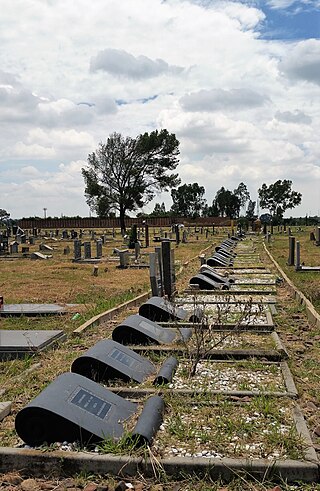
The Sharpeville massacre occurred on 21 March 1960 at the police station in the township of Sharpeville in the then Transvaal Province of the then Union of South Africa. After demonstrating against anti-black pass laws, a crowd of about 7,000 black protesters went to the police station. Sources disagree as to the behaviour of the crowd: some state that the crowd was peaceful, while others state that the crowd had been hurling stones at the police and that the mood had turned "ugly". The South African Police (SAP) opened fire on the crowd when the crowd started advancing toward the fence around the police station; tear-gas had proved ineffectual. There were 249 victims in total, including 29 children, with 69 people killed and 180 injured. Some were shot in the back as they fled.

Ciskei, officially the Republic of Ciskei, was a Bantustan for the Xhosa people, located in the southeast of South Africa. It covered an area of 7,700 square kilometres (3,000 sq mi), almost entirely surrounded by what was then the Cape Province, and possessed a small coastline along the shore of the Indian Ocean.
Sharpeville is a township situated between two large industrial cities, Vanderbijlpark and Vereeniging, in southern Gauteng, South Africa. Sharpeville is one of the oldest of six townships in the Vaal Triangle. It was named after John Lillie Sharpe who came to South Africa from Glasgow, Scotland, as secretary of Stewarts & Lloyds. Sharpe was elected to the Vereeniging City Council in 1932 and held the position of mayor from 1934 to 1937.

The Defiance Campaign against Unjust Laws was presented by the African National Congress (ANC) at a conference held in Bloemfontein, South Africa in December 1951. The Campaign had roots in events leading up the conference. The demonstrations, taking place in 1952, were the first "large-scale, multi-racial political mobilization against apartheid laws under a common leadership."
The following lists events that happened during 1985 in South Africa.

Apartheid was a system of institutionalised racial segregation that existed in South Africa and South West Africa from 1948 to the early 1990s. Apartheid was characterised by an authoritarian political culture based on baasskap, which ensured that South Africa was dominated politically, socially, and economically by the nation's minority white population. In this minoritarian system, there was social stratification and campaigns of marginalization such that white citizens had the highest status, with them being followed by Indians as well as Coloureds and then Black Africans. The economic legacy and social effects of apartheid continue to the present day, particularly inequality.
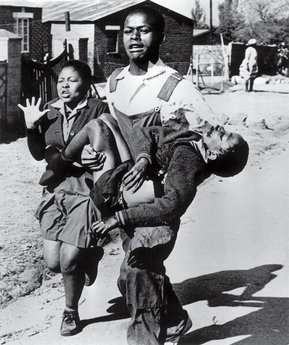
The Soweto uprising, also known as the Soweto riots, was a series of demonstrations and protests led by black school children in South Africa during apartheid that began on the morning of 16 June 1976.
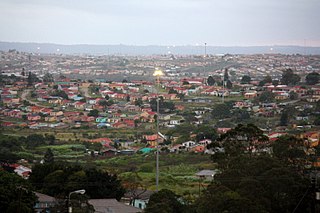
Mdantsane is a South African urban township situated 15 km away from East London and 37 km away from Qonce in the Eastern Cape. It is the second largest township in Eastern Cape and 17th largest in the Top 20 largest townships in South Africa.
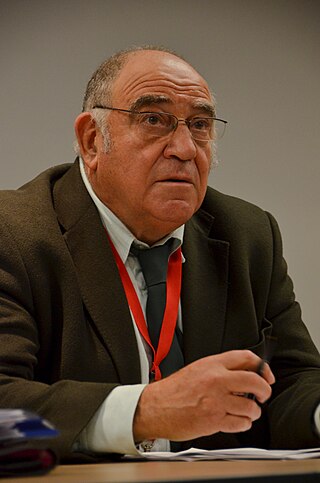
Ronald Kasrils is a South African politician, former guerrilla and military commander. He served in a number of ministerial posts, including the as Minister for Intelligence Services from 2004 to 2008. He was a member of the National Executive Committee (NEC) of the African National Congress (ANC) from 1987 to 2007 as well as a member of the Central Committee of the South African Communist Party (SACP) from December 1986 to 2007.

The Bisho massacre occurred on 7 September 1992 in Bisho, in the then nominally independent homeland of Ciskei which is now part of the Eastern Cape in South Africa. Twenty-eight African National Congress supporters and one soldier were shot dead by the Ciskei Defence Force during a protest march when they attempted to enter Bisho to demand the reincorporation of Ciskei into South Africa during the final years of apartheid.

Thomas Titus Nkobi was a senior leader of the South African African National Congress (ANC) and a key figure in the Anti-Apartheid movement. Until his death he was the Treasurer General of the ANC and also its Member of Parliament.

Internal resistance to apartheid in South Africa originated from several independent sectors of South African society and took forms ranging from social movements and passive resistance to guerrilla warfare. Mass action against the ruling National Party (NP) government, coupled with South Africa's growing international isolation and economic sanctions, were instrumental in leading to negotiations to end apartheid, which began formally in 1990 and ended with South Africa's first multiracial elections under a universal franchise in 1994.
Daniel Mogoasha Mokonyane was a South African political revolutionary and writer and legal academic. Latterly residing in London, he was best known for his leadership during the 1957 Alexandra Bus Boycott, one of the most successful single-issue campaigns undertaken during Apartheid.
The 1957 Alexandra bus boycott was a protest undertaken against the Public Utility Transport Corporation (PUTCO) by the people of Alexandra in Johannesburg, South Africa.
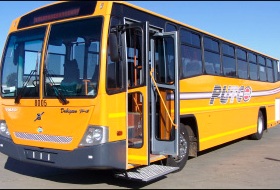
The Public Utility Transport Corporation (PUTCO) is a provider of commuter bus services in the provinces of Gauteng, Limpopo, and the western parts of Mpumalanga in South Africa. PUTCO was established in 1945 after the bus strike of 1944.

Duncan Village is a township in the Buffalo City Metropolitan Municipality in the Eastern Cape province of South Africa. The township is located about five kilometres away from the East London central business district (CBD). Duncan Village is divided into six wards, with each headed by a ward councillor. There are no clear divisions between the informal and formal parts of the township since most shacks are planted on the open spaces within formal houses.

The apartheid regime in South Africa began in 1948 and lasted until 1994. It involved a system of institutionalized racial segregation and white supremacy, and placed all political power in the hands of a white minority. Opposition to apartheid manifested in a variety of ways, including boycotts, non-violent protests, and armed resistance. Music played a large role in the movement against apartheid within South Africa, as well as in international opposition to apartheid. The impacts of songs opposing apartheid included raising awareness, generating support for the movement against apartheid, building unity within this movement, and "presenting an alternative vision of culture in a future democratic South Africa."

On 18 July 1983, Mdantsane and East London communities embarked on a bus boycott to protest an unannounced five cent increase in bus fares. The residents abandoned the partly Ciskei government-owned Ciskei Transport Corporation (CTC) buses for taxis and trains. On 4 August 1983, the Ciskei police tried to prevent residents from taking the train at Egerton train station in Mdantsane. After hesitating, the crowd advanced a few paces. However, as the police drew their guns, the people stopped. Without warning, the police fired into the crowd killing 11 and injuring 36 commuters, leading to what is now known as the Egerton railway station bus boycott massacre, the Mdantsane bus boycott massacre, the Egerton massacre, and similar terms.

On 21 March 1985, on the 25th anniversary of the Sharpeville massacre, members of the South African Police opened fire on a crowd of people gathered on Maduna Road between Uitenhage and Langa township in the Eastern Cape, South Africa. The crowd had been attending a funeral of one of the six who had been slain by the apartheid police on 17 March 1985. They had gathered at Maduna Square and were heading towards the house where the funeral was held when the police blocked the road with two armoured vehicles and ordered the crowd to disperse. When the crowd failed to comply immediately, police opened fire on the crowd, killing 35 people and leaving 27 wounded. The incident became known as the Uitenhage/Langa massacre.
References
- ↑ "Liberation history Timeline 1940-1949 | South African History Online". www.sahistory.org.za.
- ↑ First, Ruth (July–September 1957). "The Bus Boycott" (PDF). Africa South. 1 (4): 55–64.
- ↑ "Mandela: Comrade" (PDF). Apartheid Museum . Retrieved 15 April 2022.
- ↑ "Azikhwelwa! – The Alexandra Bus Boycott". Archived from the original on 24 May 2011. Retrieved 23 December 2008.
- ↑ "5. 'ASINAMALI' (WE HAVE NO MONEY)". Archived from the original on 6 November 2009. Retrieved 23 December 2008.
- ↑ Copied content from 1957 Alexandra bus boycott
- ↑ "Upgraded Egerton memorial to be unveiled". SA News. 23 September 2013. Retrieved 28 August 2017.
- ↑ Swilling, Mark. "The buses smell of blood: The East London boycott" (PDF). University of KwaZulu Natal. Retrieved 28 August 2017.
- ↑ Copied content from Egerton railway station bus boycott massacre